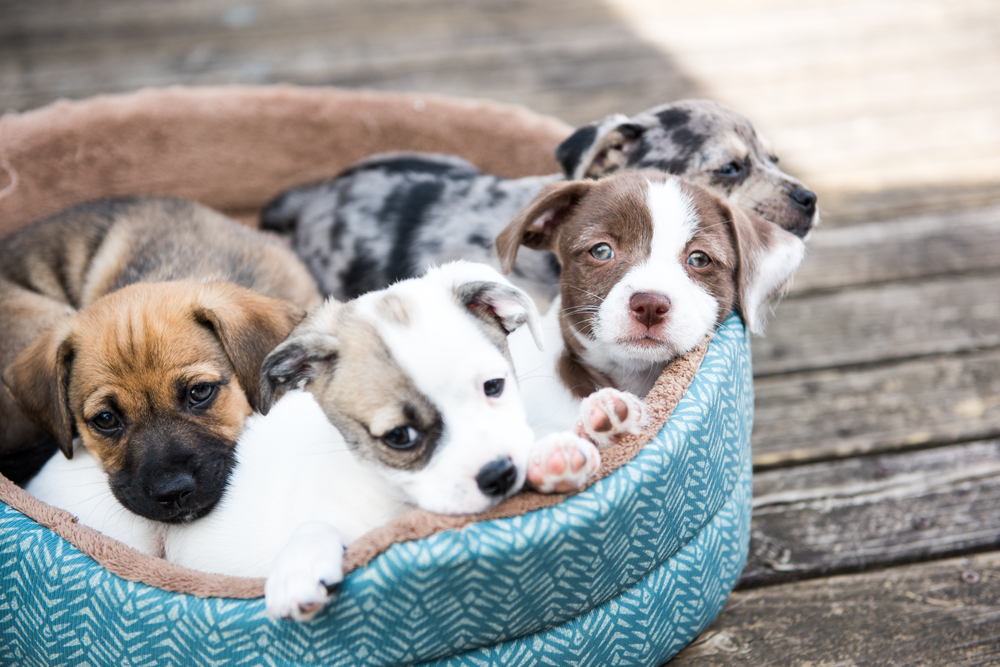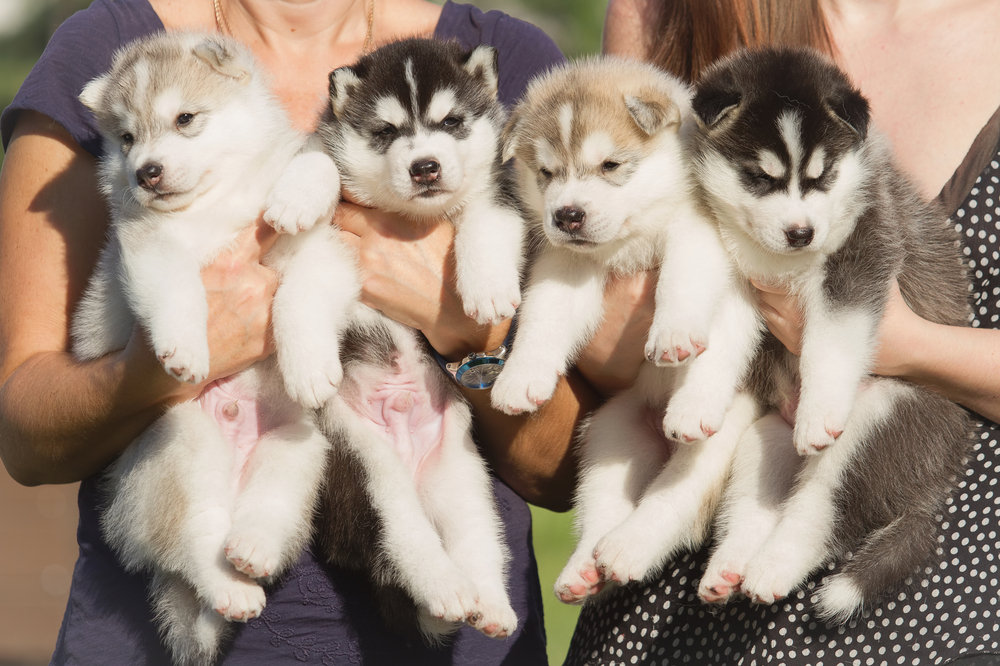
At Petland Florida, we love helping people pick out the best breed for them and introducing them to our puppies. Our highly-trained pet counselors are true dog breed experts that educate our customers about the specific personalities of the breeds we sell. Each breed has its own characteristics and every individual puppy has its own […]
At Petland Florida, we love helping people pick out the best breed for them and introducing them to our puppies. Our highly-trained pet counselors are true dog breed experts that educate our customers about the specific personalities of the breeds we sell.
Each breed has its own characteristics and every individual puppy has its own unique personality. Some breeds have a ton of energy, while others place a high premium on relaxing.
No matter what dog breed you’re interested in taking home, there are 7 behaviors to look for in the puppies you meet at the pet store.
Before we get started, we’d like to mention that it’s important to bear in mind that it isn’t necessarily ideal for the following traits to be a 10 on a scale of 1 – 10. For example, if you notice a puppy that is extremely independent, the downside is that he could be “willful” and more difficult to train. Likewise if his “dominance” seems like it’s at a 10.
Now that we addressed that caveat, let’s look at the 7 behaviors:

A confident puppy will eagerly break away from his puppy pals to greet you and meet you. His tail will be up and wagging, and he’ll have bouncy, happy energy. He may jump up on you and exhibit other untrained behaviors, but that’s to be expected.
A confident puppy will also accept your leadership with enthusiasm, meaning that if you initiate a game or some other kind of interaction, the puppy will be eager to understand and please you.
The puppy behavior, “independence,” is actually a spectrum. Extremely independent puppies tend to be disinterested and willful, making them difficult to train and a little boring to live with. Who wants a dog that doesn’t want to have anything to do with them? On the other end of the extreme are dependent puppies. These puppies tend to be overly anxious and could feel traumatized if and when their owners leave them alone for long hours.
The good news is that the majority of puppies out there do not fall within either ends of the spectrum, but rather display a healthy degree of independence, making them “interdependent” on their owners, i.e. “best friends.” You’ll know if a puppy is too independent if he doesn’t express his interest in you and follow you around. So, you can test him in the pet store, and simply see if he’ll follow you.
Similar to how you wouldn’t want a puppy that’s too independent, you also wouldn’t want a puppy that’s too dominant. Your puppy will be your best friend for the next 10 – 15 years, and you don’t want to have a power struggle with him the whole time. Your furry bestie should be happy about his position as your little sidekick, and he should be eager to please you, assist you when you ask—Fido, slippers!—and fully obey you at all times.
So, how will you know whether or not a puppy is too dominant to deal with when you only have an hour or so to spend with him at the pet store before making a decision? Here is the best test. Place the puppy on his back and gently hold him with your hand so that he stays on his back. Does he struggle, fighting against your hand, to free himself and get up? Or does he relax submissively? At the end of the day, you’ll want to choose the puppy that submits.

There’s nothing sweeter than a puppy that looks to you in order to learn about the world and how to behave. The primary nature of domestic dogs is that they want to please their owners. All dog breeds are trainable, but some breeds are “quicker learners” than others. Interestingly, some breeds, like German Shepherds and Border Collies, need complex jobs and responsibilities for mental stimulation and to be happy—they’re that smart.
While breeds are one matter, each individual puppy will possess its own capacity to be trained. There can be willful German Shepherds and there can be highly intelligent, obedient Corgis. Just like people, individual dogs within the same breed can showcase an array of trainability.
When you’re at the pet store, you can assess a puppy’s trainability by trying to get his attention with a ball or other toy. Does the puppy show interest and give you his attention? Do his ears perk up and does he seem eager to understand you? If so, this is a good sign he’s high on the trainability scale.
When you’re meeting puppies and trying to decide which one to take home, there are some destructive behaviors to watch out for. These behaviors aren’t red flags that should prevent you from choosing the puppy in question, but they are indications that you’ll have to place special emphasis on quickly training the puppy not to continue the destructive behavior once you have taken him home.
During puppyhood, which lasts until a puppy is roughly 8 months old, your puppy will feel the strong urge to chew things. This is completely normal.
There are a couple reasons why puppies like to chew everything in sight. The biggest reason is because they are teething. And secondary reasons have to do with them simply not knowing any better.
It’s within your control to successfully train your puppy not to chew items in your home that are not meant to be chewed. Provide your new puppy with teething chew toys, regular chew toys, and chew treats, and when he tries to chew the furniture or your slippers, a stern, “no” will do.
We’ll be honest here. Different dog owners have different views about their dogs “jumping up” on people. Some dog owners find it adorable—who wouldn’t want a strange dog to jump up on them? It’s the best! While other dog owners find it unacceptable and regard it as a liability—who would want to risk some strange lady suing them because their dog left paw prints on her Chanel pants suit?
No matter which camp you personally fall into, it’s a good idea to at least train your puppy to understand what “jumping” is so that you can tell your puppy not to jump on people if and when doing so would be inappropriate.
Biting is obviously destructive and if a puppy reaches adulthood and has never been trained out of the habit of biting, it could spell serious trouble. The good news is that you can easily train your puppy not to bite, as long as you’re firm and consistent.
From your puppy’s perspective, he actually doesn’t know that he’s “biting” per se, because he’s simply “chewing” and probably trying to relieve teething pain or he thinks he’s “playing.”
As the puppy parent, it’s your duty to teach him that biting people during play, to relieve teething pain, or for any other reason is not allowed. You can do this by making a high-pitched “yelping” sound if and when he bites your fingers, hands, arms, or wherever. When you do this, it sounds like a hurt puppy, and your puppy will immediately back off because he would never want to hurt another puppy.

Before we wrap up this article, there are three bonus behaviors to assess when you’re meeting puppies:
Now that you know the 7 behaviors to look for in a pet store puppy, are you ready to come by Petland Florida and meet our available puppies?